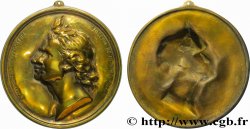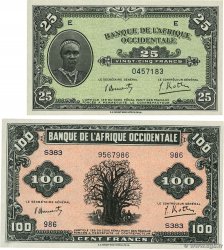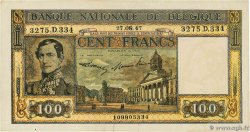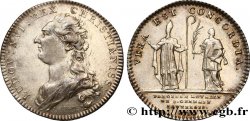Live auction - fme_896358 - LOUIS XVI Médaille, Raffineurs de Bordeaux
Чтобы принять участие в торгах, вы должны войти в систему и стать подтвержденным участником аукциона. Войдите, чтобы сделать ставку. Ваш аккаунт будет подтвержден в течение 48 часов. Не ждите до закрытия торгов, чтобы зарегистрироваться.Сделав ставку на данный товар, вы вступаете в юридическое соглашение на покупку выбранного товара и нажатием кнопки «Сделать ставку» подтверждаете принятие вами условий интернет-аукционов cgb.fr.
Ставка может бить сделана только в полном эквиваленте евро. Торги закроются согласно времени, указанному в описании товара, все ставки, сделанные после закрытия торгов, учитываться не будут. Не следует откладывать предложение вашей ставки до последнего момента, так как система может не успеть обработать вашу заявку, и ваша ставка не будет принята. Более детальную информацию вы найдёте здесь: FAQ по интернет-аукционам.
Все ставки победителей подлежат комиссии 18%.
Все ставки победителей подлежат комиссии 18%.
| Оценить : | 200 € |
| Цена : | 311 € |
| Максимальная предлагаемая цена : | 311 € |
| Конец торгов : | 13 February 2024 15:44:25 |
| Участников : | 5 Участников |
Тип Médaille, Raffineurs de Bordeaux
Дата: 1786
Металл: copper
Диаметр: 41,5 mm
Ориентация осей монеты: 12 h.
Гравер LORTHIOR Pierre-Joseph (1733-1813)
Вес: 29,70 g.
Век: lisse
Пуансон: sans poinçon
Редкость: R1
Комментарии о состоянии
Jolie patine marron hétérogène, présentant du rouge de frappe autour de certains reliefs. Petite usure sur les reliefs. Présence de quelques petits coups
Ссылки в каталоге: :
Происхождение:
Médaille provenant d’une vente A. H. Baldwuin, London, 12 mai 1980
Лицевая сторона
Аверс: легенда: LUD. XVI REX. CHRISTIANISS..
Аверс: описание: Buste du Roi à gauche, vêtu d'une veste fleurdelisée avec le cordon de l'Ordre du Saint-Esprit et le bijou de la Toison d'or ; signé LORTHIOR F. sous le buste.
Обратная сторона
Реверс: легенда: RAFFINERIES REVIVIFFIEES - ARRET DU 25 MAI 1786 // PRESENTE / AU ROI / PAR LES / RAFFINEURS / DE / BORDEAUX .
Реверс: Описание: entre deux branches de cannes à sucre en 6 lignes : .
Комментарий
Sur certaines médailles Louis XVI en plus du cordon ou de la plaque de l'Ordre du Saint-Esprit, présente le bijou de la Toison d'or. En tant que mari de Marie-Antoinette et beau-frère de Joseph II, il peut très bien avoir reçu l'ordre autrichien. A moins que son cousin, Charles III d'Espagne ne lui est remis. Le revers de notre médaille fait référence aux raffineurs de sucre de Bordeaux qui étaient très puissants, puisque en liaison directe avec les Iles, Saint-Domingue en particulier et la Martinique. Les raffineurs semblent avoir obtenus par l'Arrêt du 25 mai 1786 de nouveaux avantages. Cette année la Vilmorin introduit la culture de la betterave à sucre qui se developpera sous le Ier Empire.
On some Louis XVI medals, in addition to the cord or plaque of the Order of the Holy Spirit, the jewel of the Golden Fleece is featured. As the husband of Marie-Antoinette and brother-in-law of Joseph II, he may very well have received the Austrian order. Unless his cousin, Charles III of Spain, was awarded it to him. The reverse of our medal refers to the sugar refiners of Bordeaux, who were very powerful, since they had direct links with the islands, particularly Santo Domingo and Martinique. The refiners seem to have obtained new advantages through the Order of May 25, 1786. That year, Vilmorin introduced the cultivation of sugar beet, which would develop under the First Empire.
On some Louis XVI medals, in addition to the cord or plaque of the Order of the Holy Spirit, the jewel of the Golden Fleece is featured. As the husband of Marie-Antoinette and brother-in-law of Joseph II, he may very well have received the Austrian order. Unless his cousin, Charles III of Spain, was awarded it to him. The reverse of our medal refers to the sugar refiners of Bordeaux, who were very powerful, since they had direct links with the islands, particularly Santo Domingo and Martinique. The refiners seem to have obtained new advantages through the Order of May 25, 1786. That year, Vilmorin introduced the cultivation of sugar beet, which would develop under the First Empire.








 Cообщить об ошибке
Cообщить об ошибке Распечатать страницу
Распечатать страницу Отправить мой выбор
Отправить мой выбор Задать вопрос
Задать вопрос Consign / sell
Consign / sell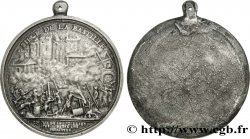
 Информация
Информация
